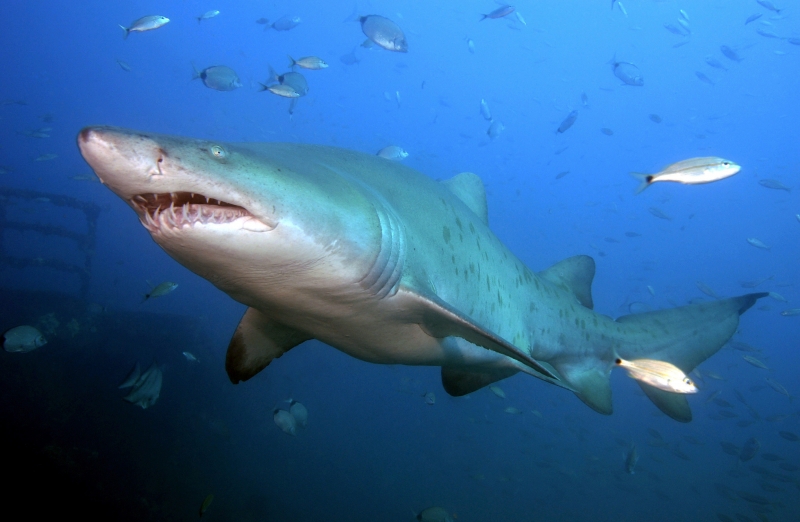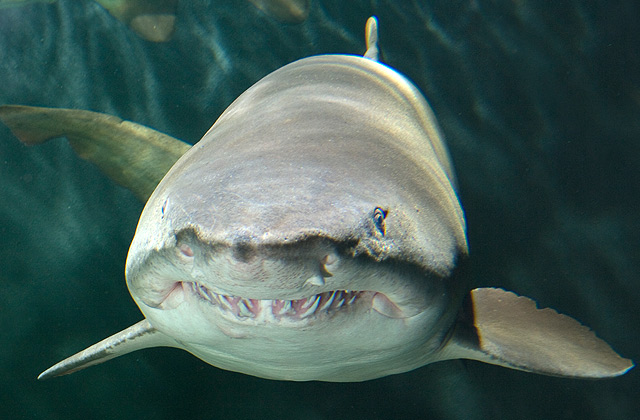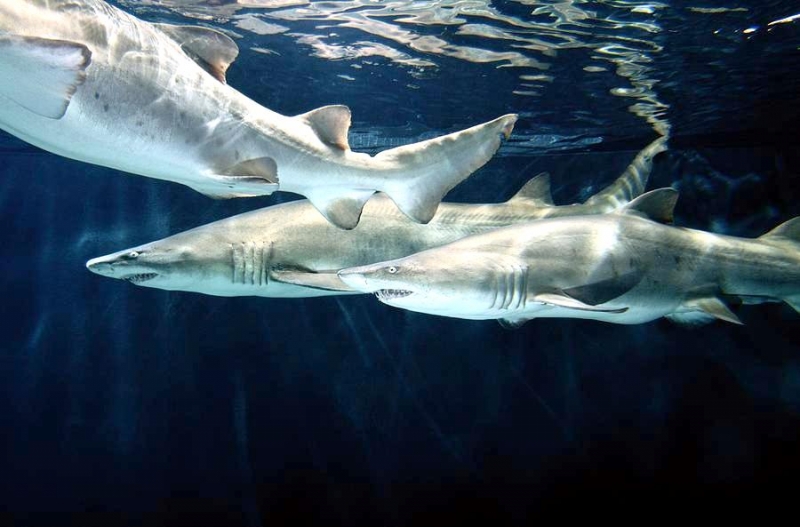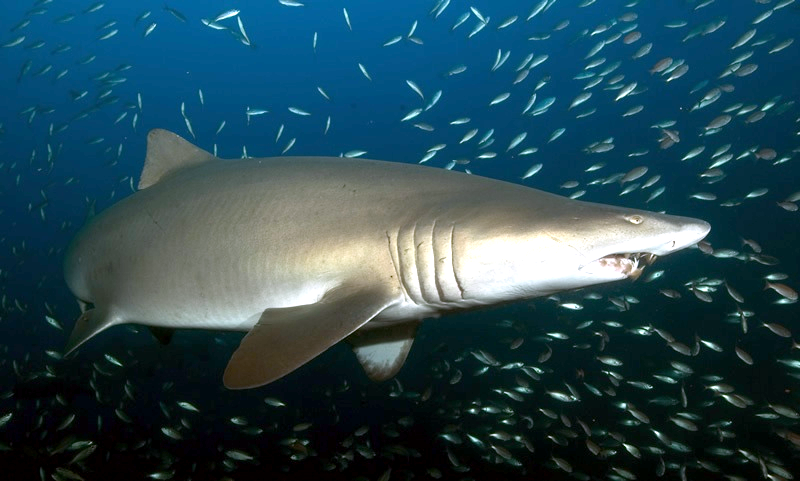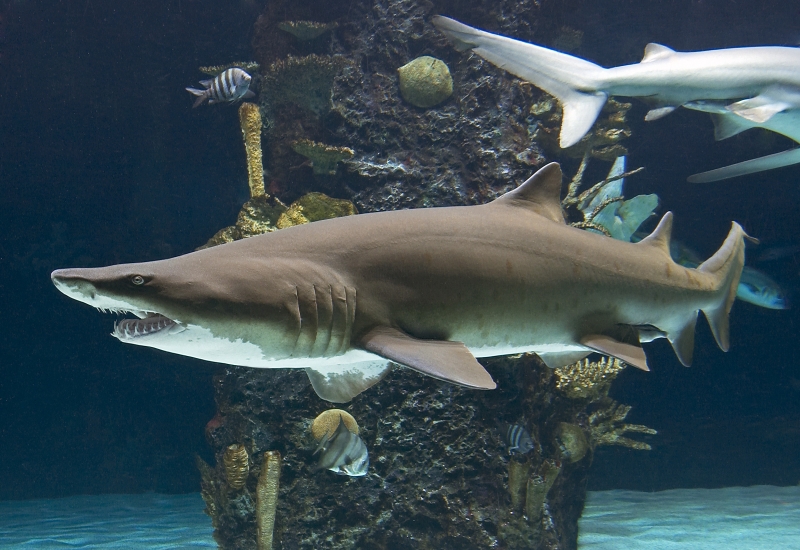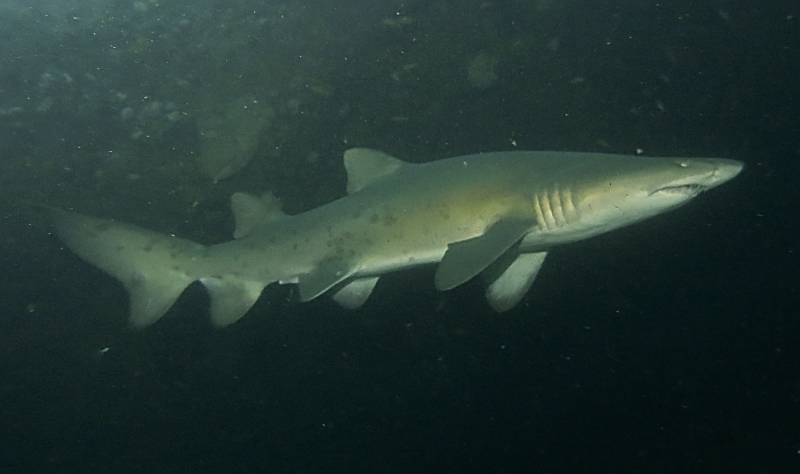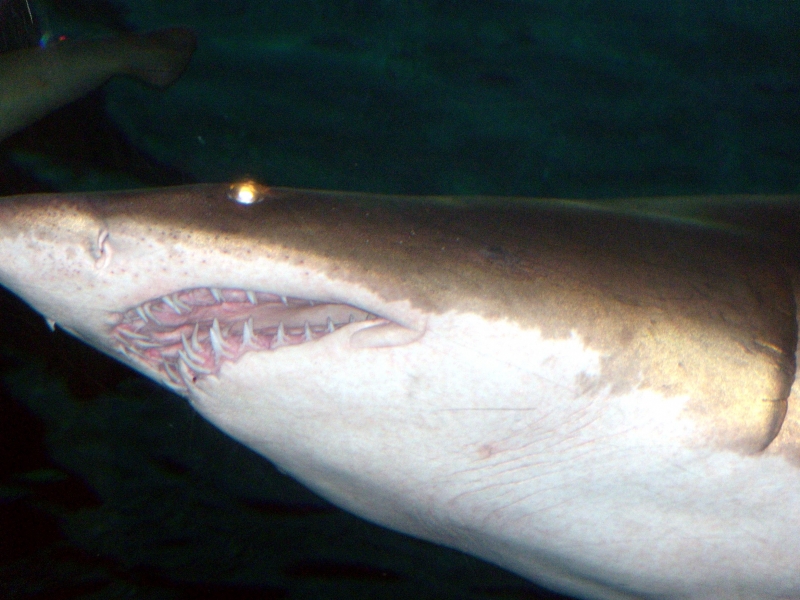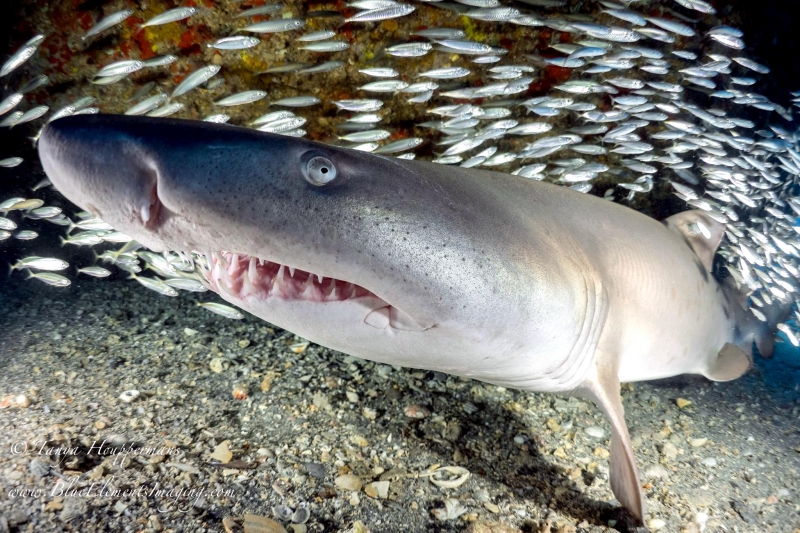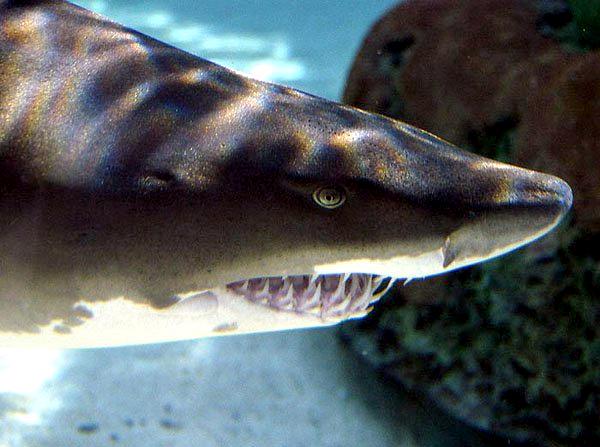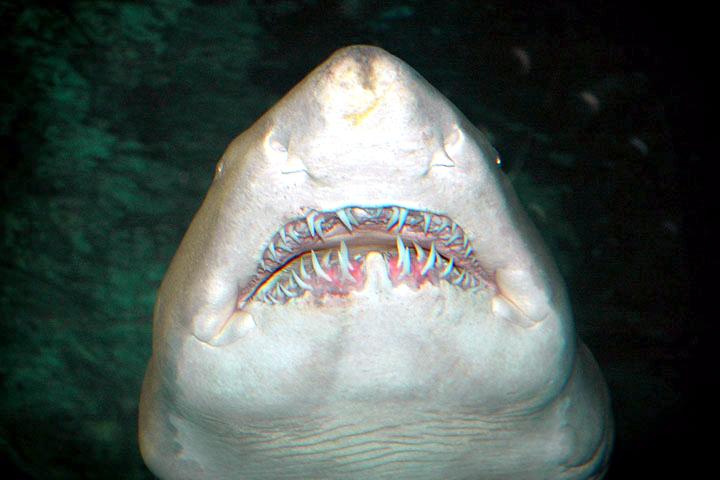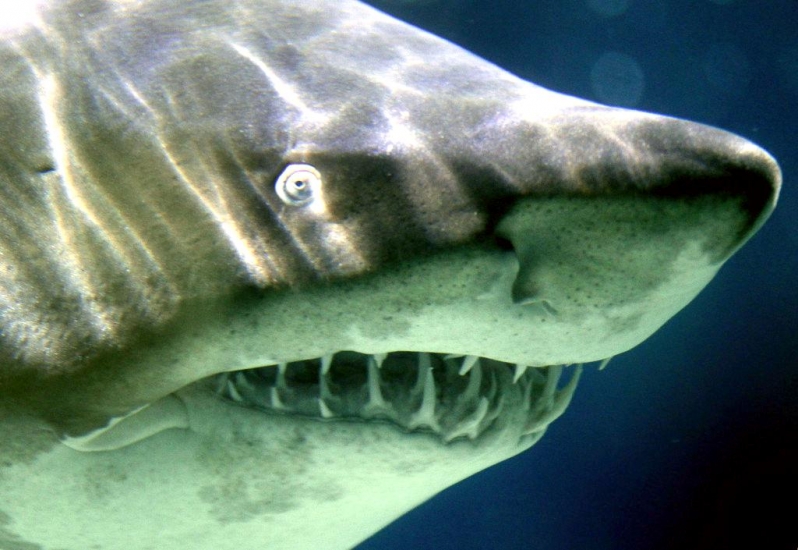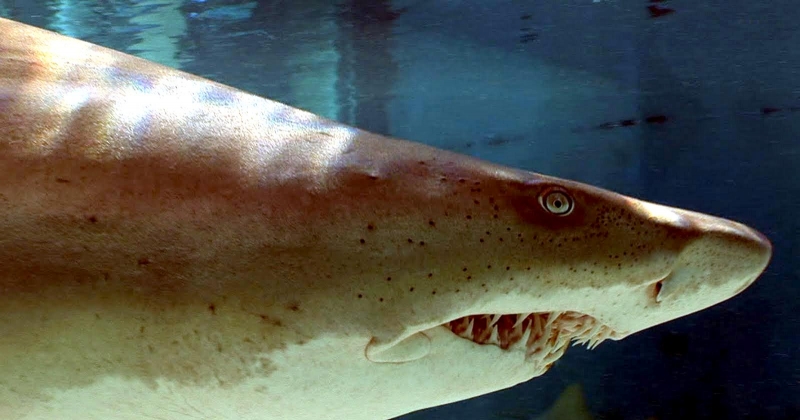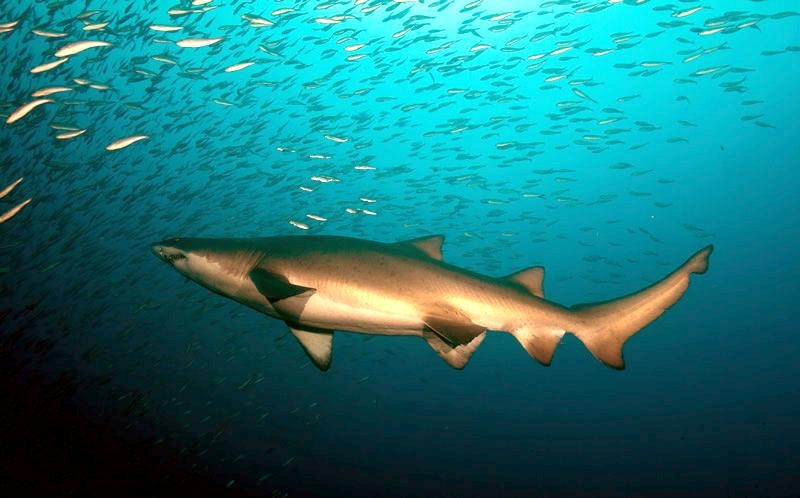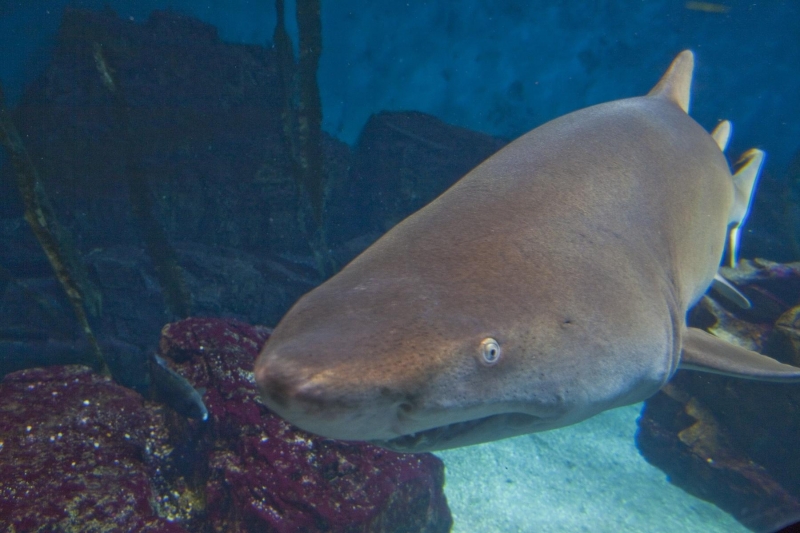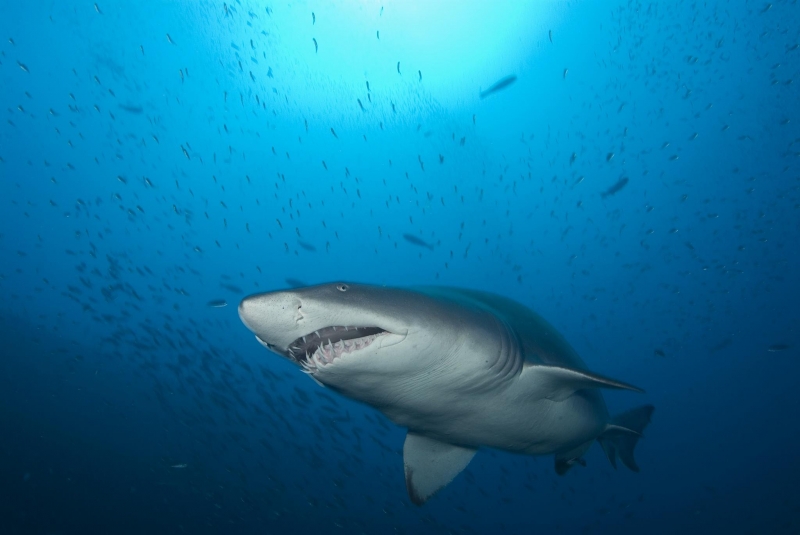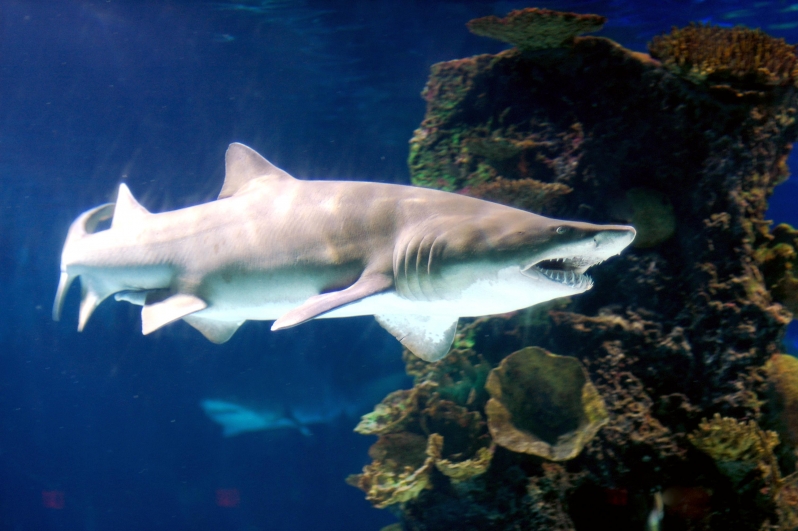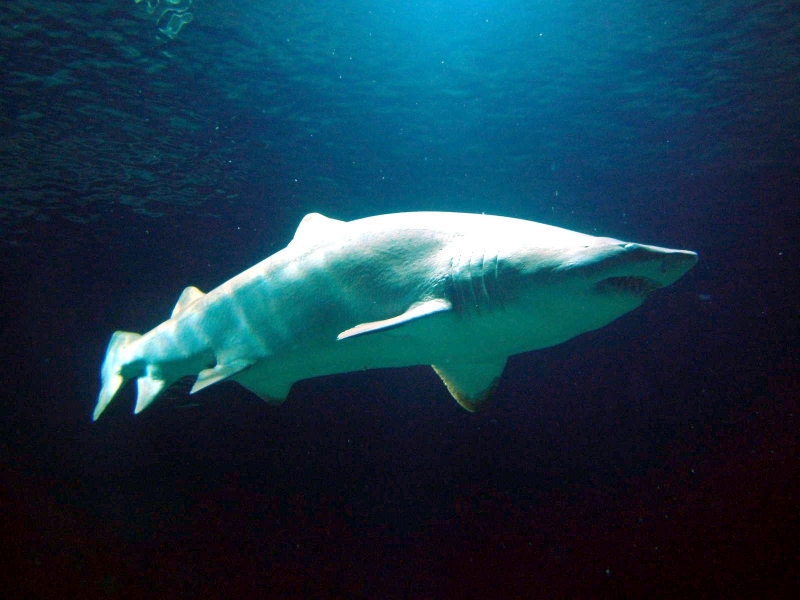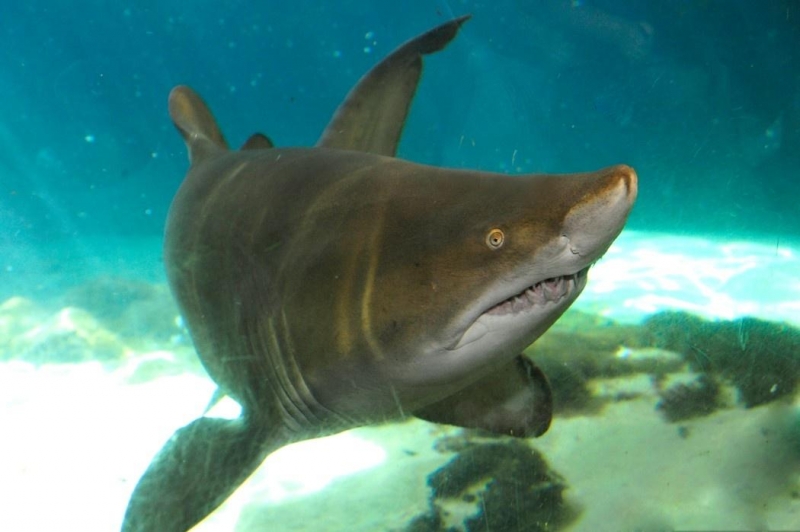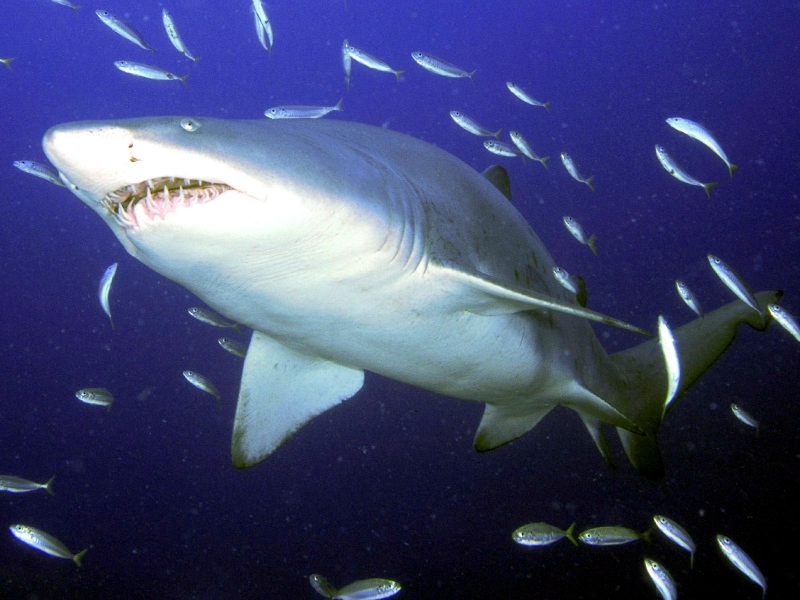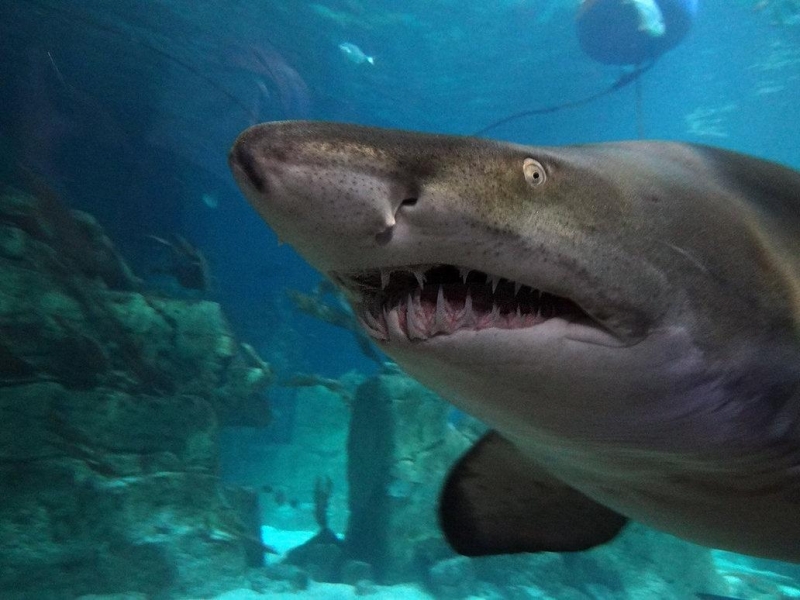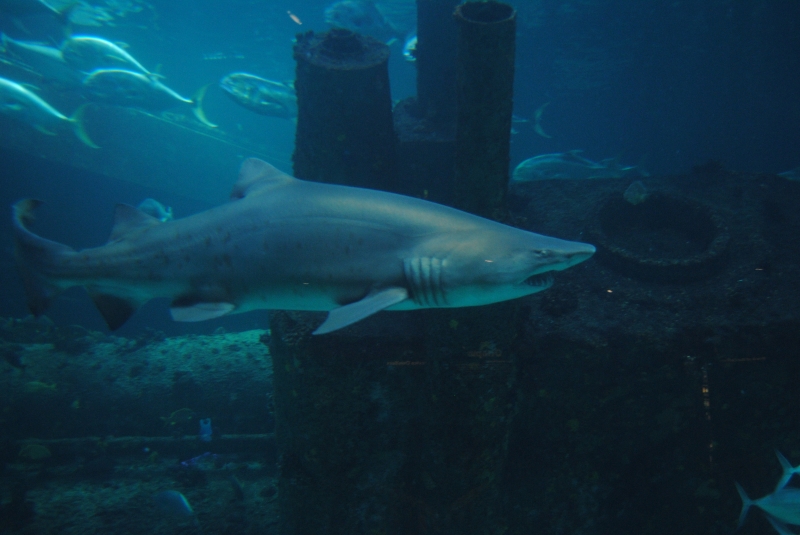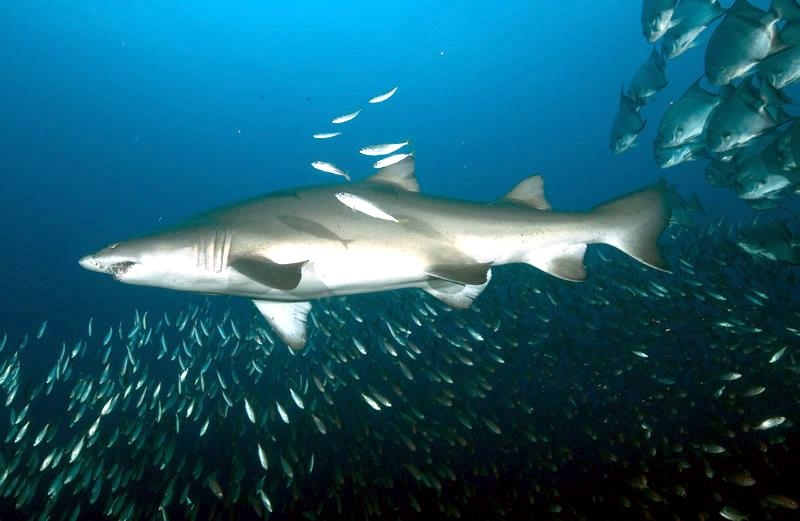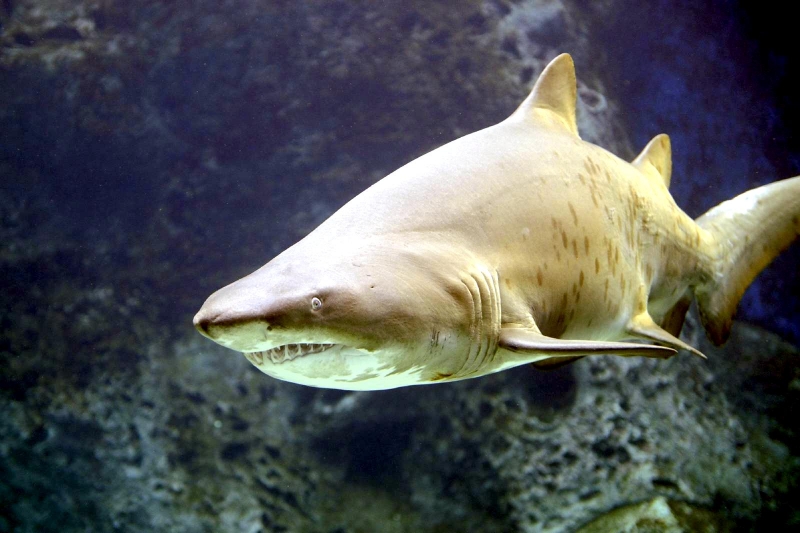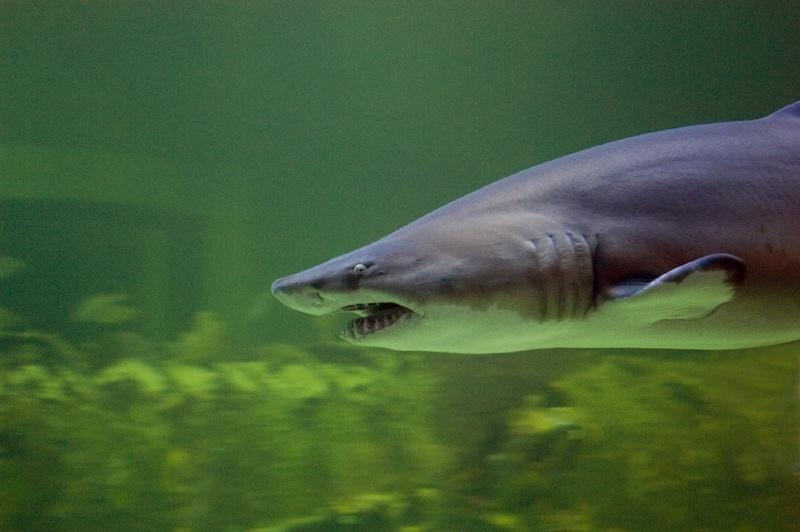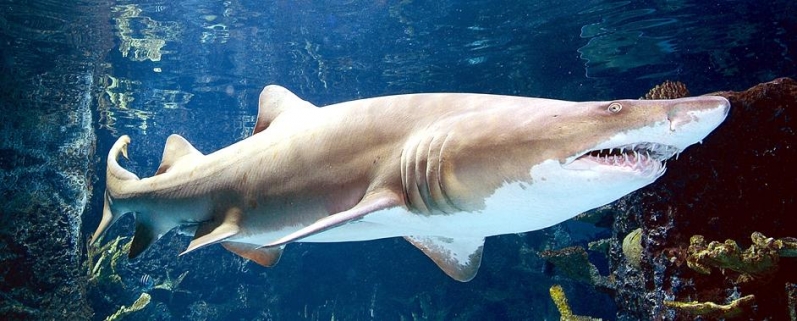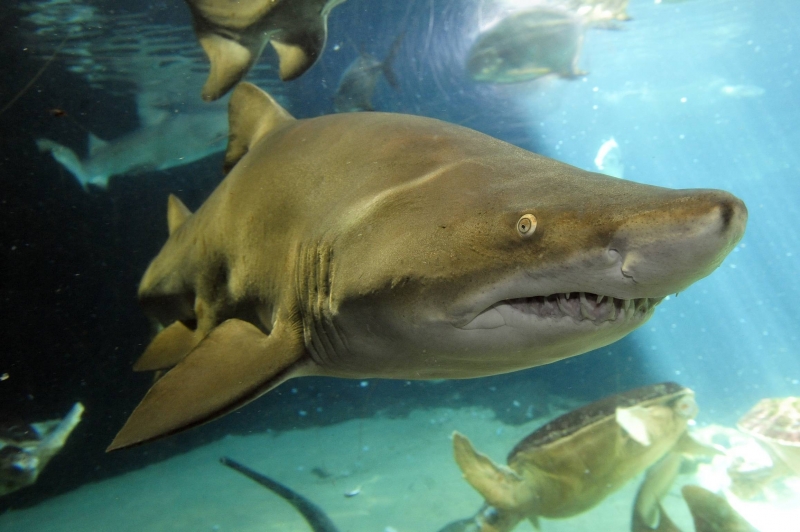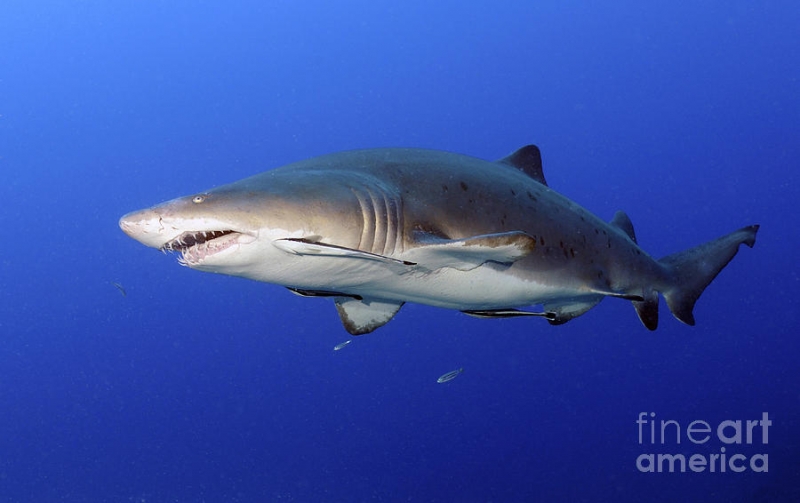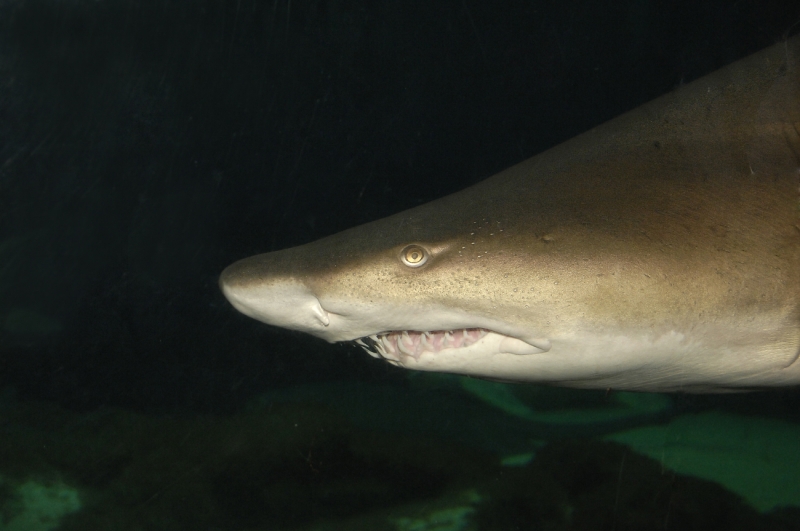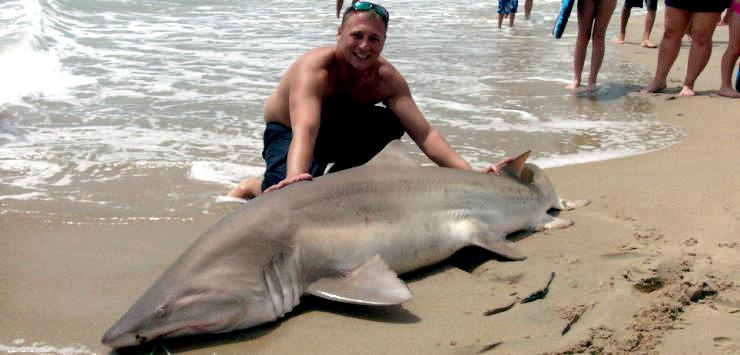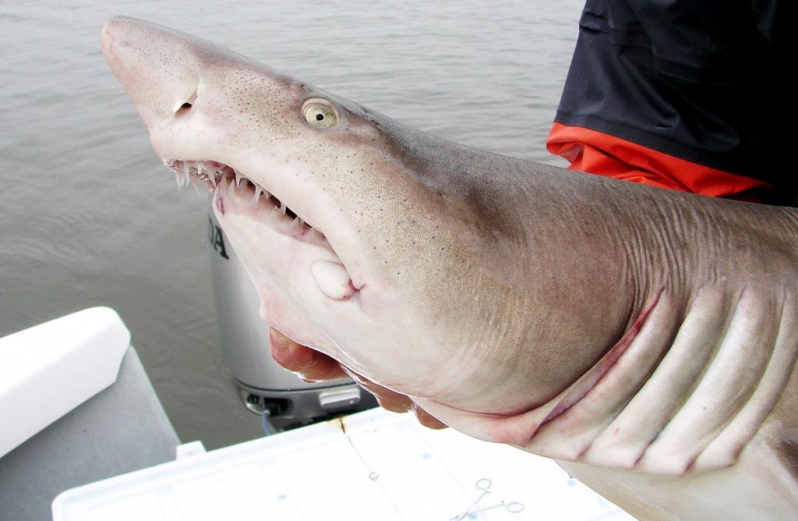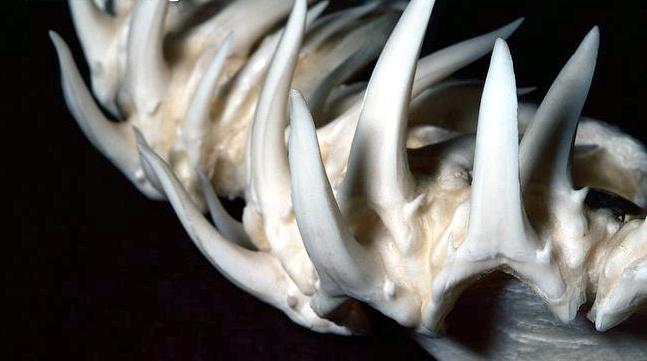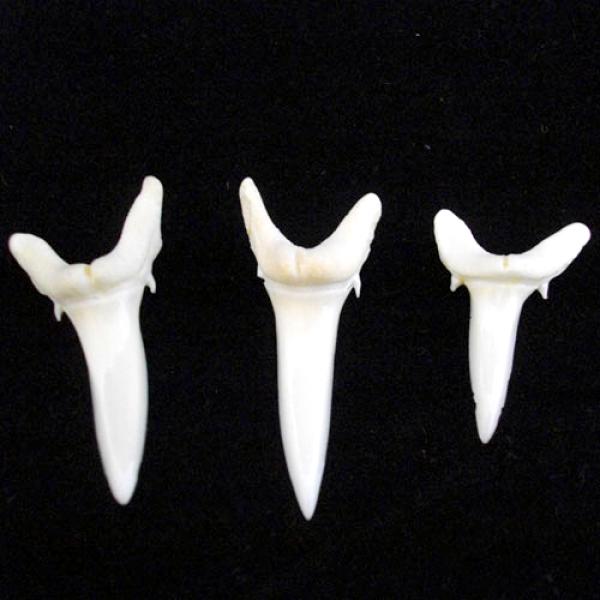“Carcharias taurus”
Sand-Tiger Sharks are also known as Ragged-tooth Sharks. These large impressive sharks have short, pointed snouts, small eyes, protruding spike-like teeth and small, equally-sized dorsal and anal fins with the first dorsal fin closer to the pelvic than to the pectoral fins. The caudal fin (tail fin) has a pronounced sub-terminal notch and short ventral lobe. Their coloring is pale brown or gray on the dorsal side, paler on the ventral side with dark spots that fade in adults. Maximum recorded size for Sand-Tiger Sharks is 3.2 meters and the maximum weight of 159 kilograms. Their name comes from their tendency to live toward shoreline habitats and they are often seen trolling the ocean floor in the surf zone, very close to shore. Sand-Tigers are the only shark known to come to the surface and gulp air. They store the air in their stomachs, which allows them to maintain neutral buoyancy & float motionless in the water while seeking prey. Sand-Tiger Sharks are voracious predators, feeding at night and generally staying close to the bottom. Their staple is small fish, but they will eat crustaceans & squid as well. They occasionally hunt in groups and have even been known to attack full fishing nets.
Sand-Tiger Sharks are found in all warm seas except the eastern Pacific Ocean. A migratory species in parts of its range, particularly in its northern & southern extremities where pole-ward migration occurs in the summer and equatorial migration in autumn & winter. Although the species is widespread, regional populations are isolated. They feed on bony fishes, small sharks, rays, squids, crabs and lobsters. This large coastal species of shark has one of the lowest reproductive rates known among elasmobranchs, giving birth to 1-2 large young every 2 years. As a result, annual rates of population increase and ability to sustain fishing pressure are very low. Sand-Tiger Sharks are ovoviviparous and their reproduction features uterine cannibalism. Eggs leave the ovaries and while in transit in the oviducts, are fertilized and enclosed in groups of 16-23 in egg cases. However at some time between fertilization & birth, only 2 embryos of its group prevails, possibly by devouring its rivals and proceeds to eat fertilized eggs and smaller potential siblings in utero until birth. Evidently this species sends forth into the world not only large, well-developed and even experienced young but young with full stomachs. The yolk sac is re-adsorbed at a small size, less than 17 centimeters and the umbilical scar may be lost. Gestation period may be from 8-9 months long with an average size at birth 100 centimeters in length. The eggs are retained within the body of the female Sand-Tiger Shark in a brood chamber where the embryo develops, receiving nourishment from a yolk sac. This is the method of reproduction for the “live-bearing” fishes where pups hatch from egg capsules inside the mother’s uterus and are born soon afterward. The Sand-Tiger Shark is not usually aggressive toward humans unless provoked but in rare cases, bites to swimmers have occurred and aggression towards divers carrying speared fish has also been reported.

